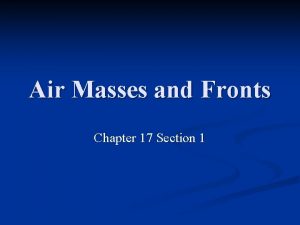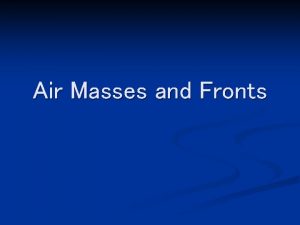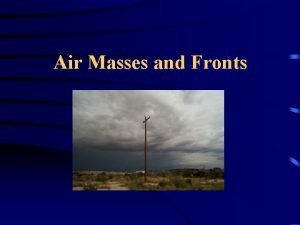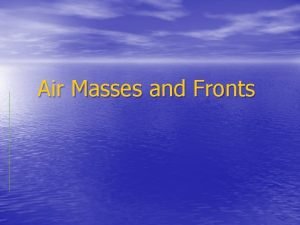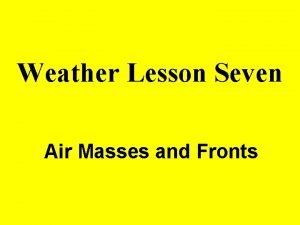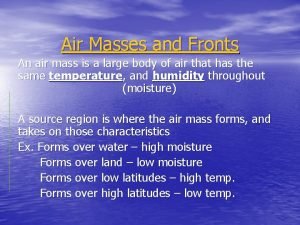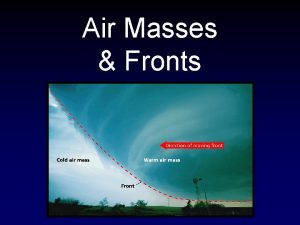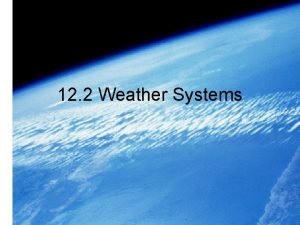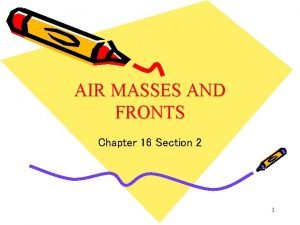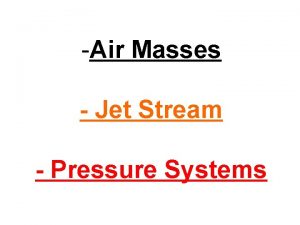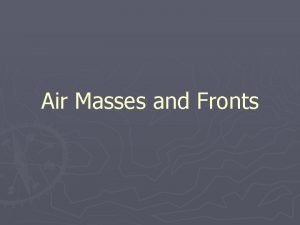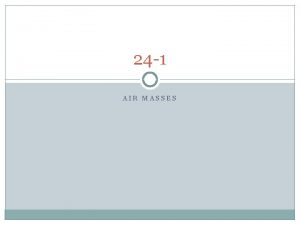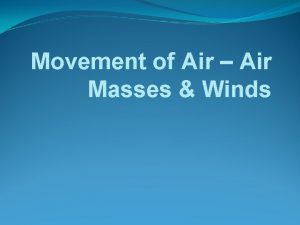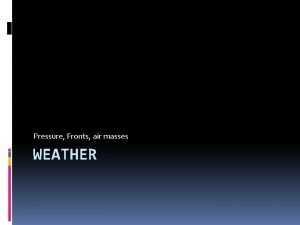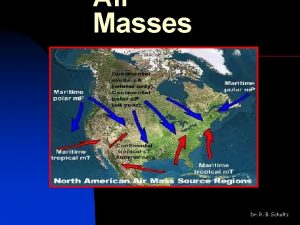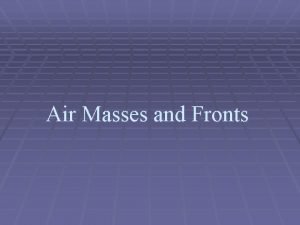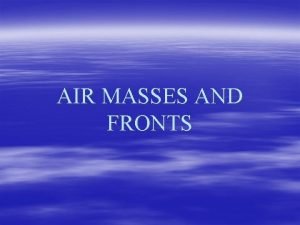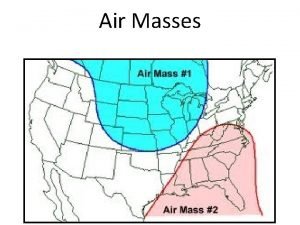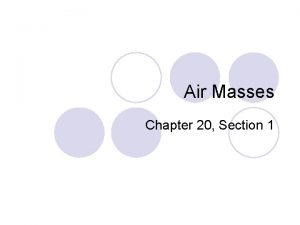Air Pressure Air Masses Air Pressure Air pressure


















- Slides: 18

Air Pressure & Air Masses

Air Pressure ✶Air pressure is the force of air over a specific location. ✶Air is matter, it has mass & volume. ✶The weight of the atmosphere on the Earth is constant.

Amount of Air Pressure ✶More air molecules, closer together = More pressure ✶Depends on the density, temperature, altitude, & the amount of moisture in the air. ✶Density depends on the mixture of gases, dust/pollution, & water vapor.

Altitude ✶Gravity is the force that keeps the atmosphere from drifting into space. ✶Gravity is strongest near the surface of the earth. ✶Air pressure decreases with height because there are fewer gas molecules to press down.

Air exerts pressure Less dense Air Pressure Most dense Earth

Cold Front ✶Low pressure- cloudy & damp ✶Warm air is less dense & is forced upward by cool dense air. ✶Air cools as it rises, increasing the relative humidity. ✶Then, water vapor condenses into clouds creating precipitation.


Warm Front ✶High pressure- “nice” weather ✶Cool dense air sinks toward the earth’s surface & becomes warmer. ✶Air warms, decreasing the relative humidity. ✶Droplets of water in the clouds evaporate causing fair weather.




Low Pressure ✶Air is less dense; less molecules in the same amount of space. – Warm air (more energy = more movement = more space). – Moisture-laden air (water vapor has less mass than dry air). – Air at higher elevations (gravity is less with more distance).

High Pressure ✶Air is more dense; more molecules in the same space. – Cold air (less energy = less movement = closer together). – Dry air (more mass=more density). – Low elevations or sea level ( greater force of gravity pulls molecules down more = closer together).

Barometer ✶Tool used to measure air pressure in (atm), standard is 29. 92 atm. ✶The farther pressure drops from 29. 92 atm, the greater the chance of a storm. ✶The farther the pressure raises above 29. 92 atm, the greater the chance of fair weather.

Air Masses & Fronts

Air Masses ✶Large bodies of air that form over land or water, can be as large as several states. ✶Formed when air stays in the same place, allowing it to cool or warm as it tries to match the temperature & humidity of the surface below it.

Air Masses ✶Weather is caused by the development & movement of large air masses. ✶Equalize the global temperatures. ✶Usually form in the tropical & polar regions because the air in the middle latitudes moves too much.

✶If it forms over land: Dry ✶If it forms over water: Wet ✶If it forms near Equator: Warm ✶If it forms near the poles: Cold
 Air mass vocabulary
Air mass vocabulary Area of low pressure where air masses meet and rise
Area of low pressure where air masses meet and rise Air masses form in the tropics and have low pressure
Air masses form in the tropics and have low pressure Air masses & frontswhat is an air mass?
Air masses & frontswhat is an air mass? Air masses & frontswhat is an air mass?
Air masses & frontswhat is an air mass? Stationary front
Stationary front The boundary between two adjacent air masses is called
The boundary between two adjacent air masses is called Two cold air masses converge on a warm air mass
Two cold air masses converge on a warm air mass Air masses & frontswhat is an air mass?
Air masses & frontswhat is an air mass? Maritime polar
Maritime polar Occluded front
Occluded front What happens when 2 air masses meet
What happens when 2 air masses meet Air masses and their characteristics
Air masses and their characteristics Occluded fron
Occluded fron Front
Front Mt air mass
Mt air mass Continental arctic air mass symbol
Continental arctic air mass symbol Warm front diagram
Warm front diagram Air masses
Air masses


